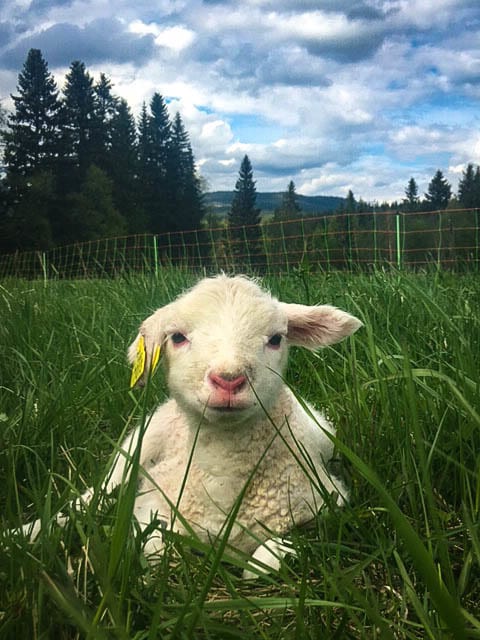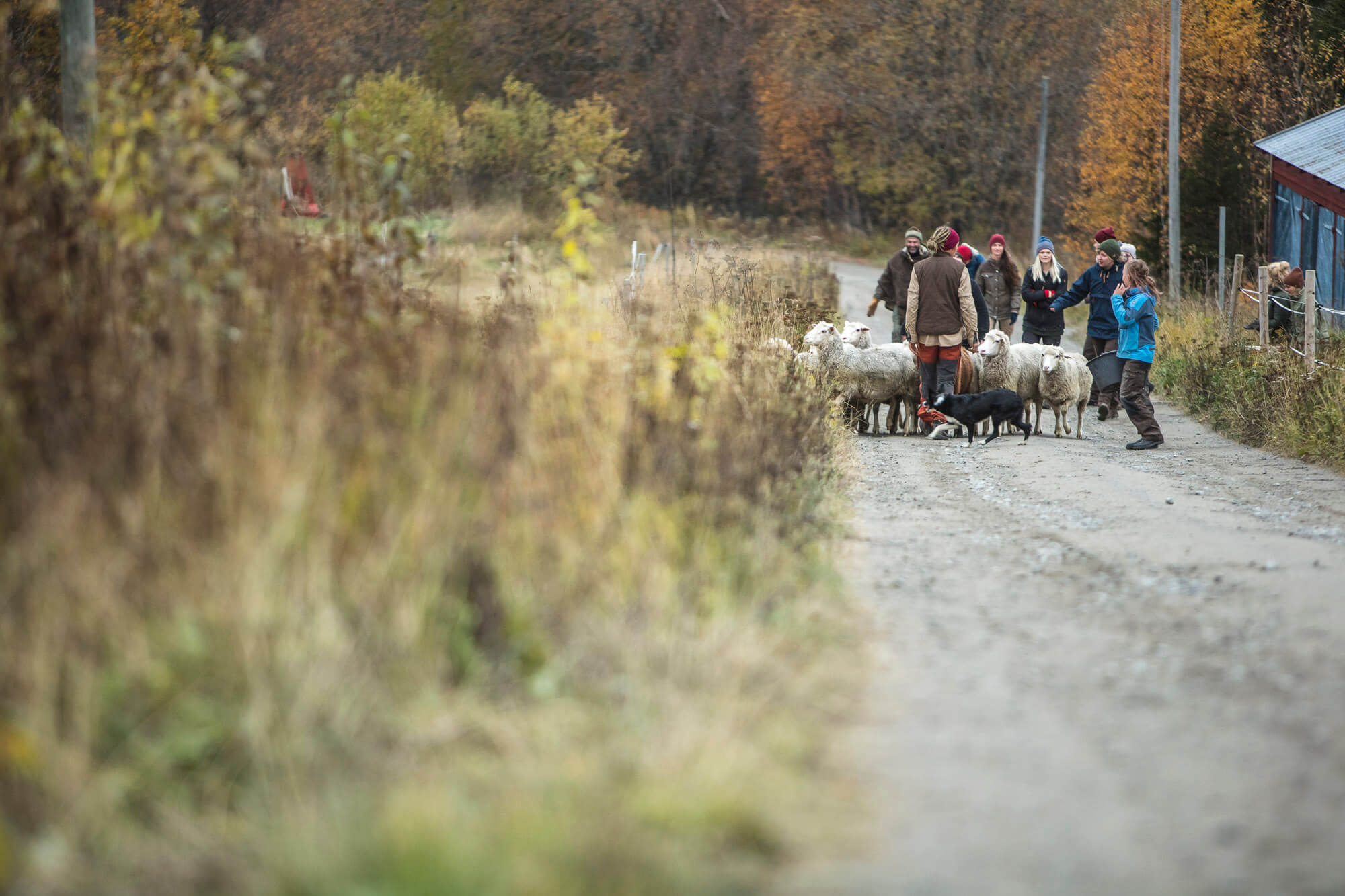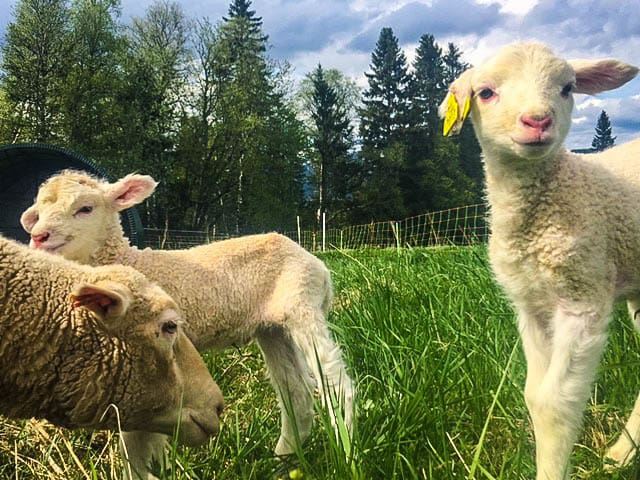Swedish sheep – The production process
June is a bountiful month here in Sweden. The landscape is awash with colour, as flowers open their buds in full bloom, trees decorate the countryside with myriad shades of green and new life begins in fields and farms from north to south.

And at Brattlandsgården, the farm we’re collaborating with to produce 100% Swedish wool, plenty of new fluffy faces are springing into being. June is lambing time.
While these little lambs hop and kick their legs into action, our Brattland No. 1 Sweater is in its final stage of approval. “We’re waiting on the Approved Sample from Ivanhoe, the weavers,” says Cecilia Yoon, Fjällräven Production Manager. “We’ve had a few delays, but it should be with us in the next few days.”

Back in February we gave you a sneak peek of the first prototype of this Swedish wool sweater and now, four months later, it’s all coming to a head.
“Once we’ve approved the final sample, all the parts of the sweater can be knitted then sewn together. We’re on a tight deadline though, as we have to have the sweaters in our Brand Stores this autumn,” says Cecilia.
Holding deadlines has been a challenge throughout the production process. 100kgs of unwashed yarn had to be cleaned – which reduced its volume to 70kgs – then spun. This was done by just two people at Ullforum. From this we created prototypes. Then samples. And now we’re on the cusp of putting the final sample into production. But again, we’re working with a small-scale Swedish producer, Ivanhoe. Delays, bottlenecks and hiccups seem to be pretty much par for the course on a production like this.
“It’s taking a lot longer than expected,” says Cecilia. “We’re working with small-scale suppliers and they don’t have huge resources at their disposal. They’re also really busy, so communication has also been slow.”
Over the years, we’ve built long-term relationships with our producers and suppliers around the world. This means communication usually runs smoothly and production processes run like well-oiled machines. With our Swedish sheep project, we’re climbing a steep learning curve. We’re having to start from scratch and we’ve found that producing in Sweden has posed additional challenges.
The problem is doing it in Sweden. We don’t have much of a textile industry left here. So we don’t have all the technical skills anymore, at least not at scale.
“The spinner is really small so she can’t really scale up, we can do one more season probably, but then we’ll have to go elsewhere. We could scale up the knitting process a bit, but by how much will depend on whether they want to work solely with us or take on work from other companies. But sewing all the parts together in Sweden is already a problem because skills and time for this are in short supply.”

And that was our first major bump in the road. Prior to this, things had just about ticked along. We had been able to find spinners and knitters in Sweden that could cope with the capacity we had and produce in a way we were satisfied with. But when it came to sewing all the bits of the sweater together, well we kind of hit the wall.
“We’ve taken the tough decision to move this part of production to Estonia. This is where the skills on the scale we need them are to be found. Yes, we wanted to produce everything in Sweden, but it simply wasn’t possible when we looked at the numbers.”
It’s not about costs. It’s simply the fact that the skills we need aren’t here on the scale we need them. We’ve chosen the supplier in Estonia because of their reputation for highly skilled sewers.
And what happens when we want to scale up? When it's not just sewers that we're lacking. But when Swedish spinners and weavers can’t cope with the volume of wool we supply them with either? Is producing in Europe worse than producing only in Sweden? We don’t think so. We’ve always chosen to go where the best skills are that can deliver at the scale we need.

“Swedish people love this project because it’s Swedish. So I think it will be difficult if we turned around and said we tried to produce everything in Sweden, but we couldn’t. So for that reason, I would like to keep as much of the production as possible in Sweden,” says Cecilia. “But then of course if we started producing throughout Europe, I don’t know how big of an impact that would place on people’s perception of the project. This might be more appealing to people from other parts of Europe. For example, if we produced the sweaters in England, maybe people in England would be more likely to buy them, but perhaps less here in Sweden. It also depends on where we’re going to sell them. This first sweater will only be available in our Brand Stores and we don’t even have one in Sweden, so perhaps that isn’t important. For our stores in Amsterdam, Oslo, Hong Kong and New York, would ‘made in Europe’ be so different to ‘made in Sweden’?"
It’s the traceability that’s fundamentally important. We know where the wool is from, where the yarn is spun, where the sweaters are made and put together. And this is something we’ll always know now, no matter where we produce the next Swedish wool sweater.
Scaling up has always been the plan with our Swedish sheep project. It is a pilot project, a test whether it’s possible to produce in Sweden. But of even greater focus was to see what we needed to do to ensure full traceability in our wool supply chain. There are often lots of unknowns when dealing with materials like wool, leather and down. We’ve managed to secure full traceability in our down chain, even though it stretches across the globe. So we’re confident we can achieve it with our wool too. But it'll probably extend beyond Sweden's border.

